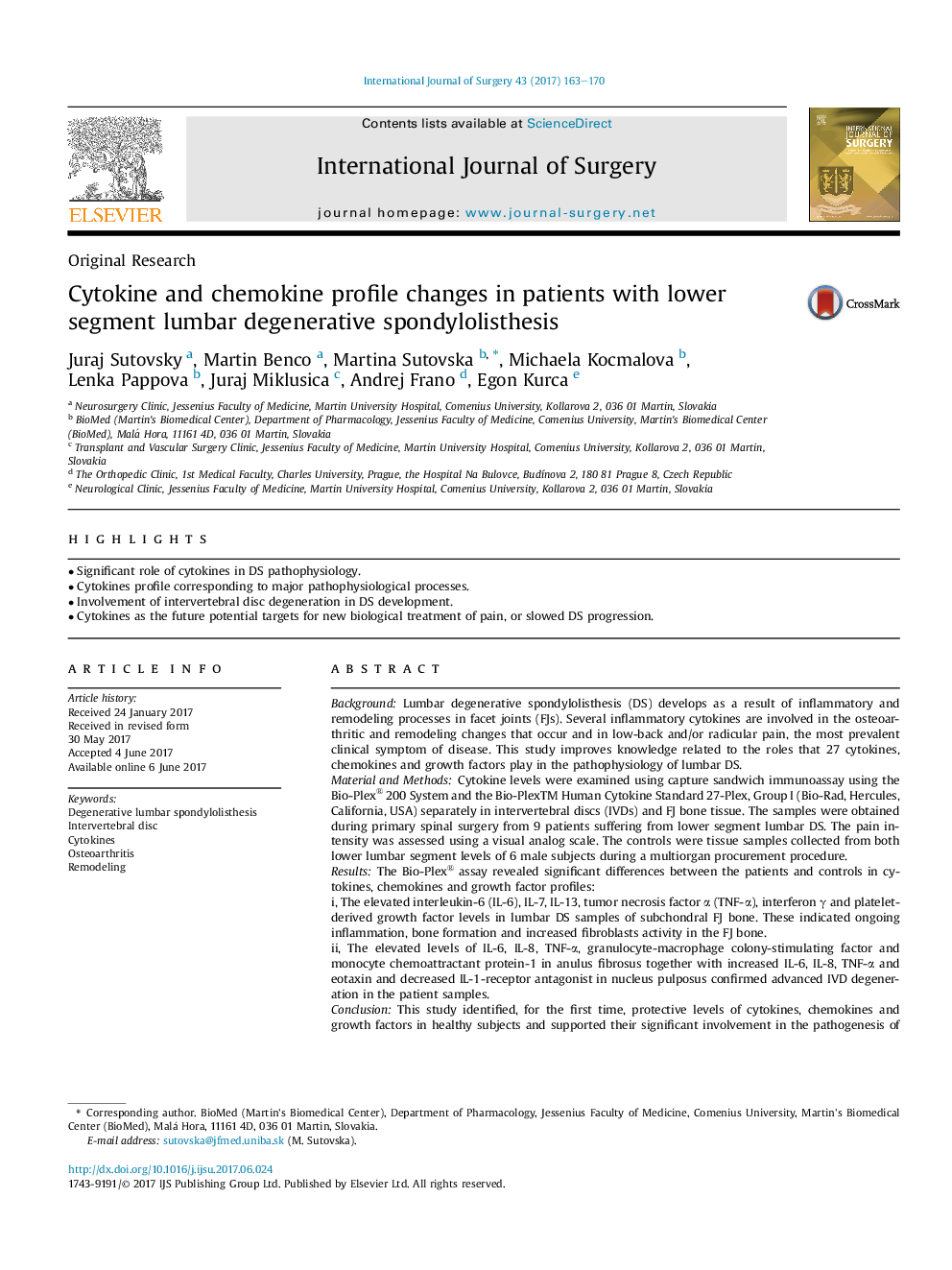| کد مقاله | کد نشریه | سال انتشار | مقاله انگلیسی | نسخه تمام متن |
|---|---|---|---|---|
| 5732150 | 1611935 | 2017 | 8 صفحه PDF | دانلود رایگان |
- Significant role of cytokines in DS pathophysiology.
- Cytokines profile corresponding to major pathophysiological processes.
- Involvement of intervertebral disc degeneration in DS development.
- Cytokines as the future potential targets for new biological treatment of pain, or slowed DS progression.
BackgroundLumbar degenerative spondylolisthesis (DS) develops as a result of inflammatory and remodeling processes in facet joints (FJs). Several inflammatory cytokines are involved in the osteoarthritic and remodeling changes that occur and in low-back and/or radicular pain, the most prevalent clinical symptom of disease. This study improves knowledge related to the roles that 27 cytokines, chemokines and growth factors play in the pathophysiology of lumbar DS.Material and MethodsCytokine levels were examined using capture sandwich immunoassay using the Bio-Plex® 200 System and the Bio-PlexTM Human Cytokine Standard 27-Plex, Group I (Bio-Rad, Hercules, California, USA) separately in intervertebral discs (IVDs) and FJ bone tissue. The samples were obtained during primary spinal surgery from 9 patients suffering from lower segment lumbar DS. The pain intensity was assessed using a visual analog scale. The controls were tissue samples collected from both lower lumbar segment levels of 6 male subjects during a multiorgan procurement procedure.ResultsThe Bio-Plex® assay revealed significant differences between the patients and controls in cytokines, chemokines and growth factor profiles:i, The elevated interleukin-6 (IL-6), IL-7, IL-13, tumor necrosis factor α (TNF-α), interferon γ and platelet-derived growth factor levels in lumbar DS samples of subchondral FJ bone. These indicated ongoing inflammation, bone formation and increased fibroblasts activity in the FJ bone.ii, The elevated levels of IL-6, IL-8, TNF-α, granulocyte-macrophage colony-stimulating factor and monocyte chemoattractant protein-1 in anulus fibrosus together with increased IL-6, IL-8, TNF-α and eotaxin and decreased IL-1-receptor antagonist in nucleus pulposus confirmed advanced IVD degeneration in the patient samples.ConclusionThis study identified, for the first time, protective levels of cytokines, chemokines and growth factors in healthy subjects and supported their significant involvement in the pathogenesis of lumbar DS. The control samples and analytical methods used avoided any false changes in the cytokine levels due to secondary factors (e.g., death of donor and limited cytokine stability).
Journal: International Journal of Surgery - Volume 43, July 2017, Pages 163-170
